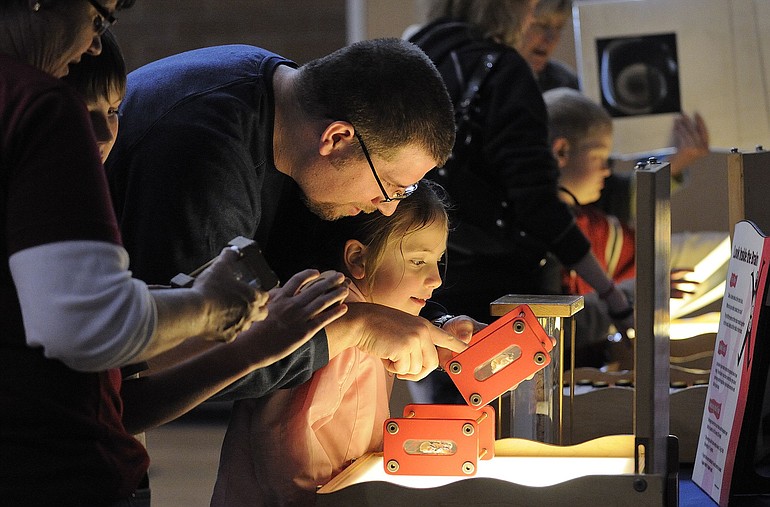• What: Community Science Night, presented by Seattle's Pacific Science Center staff members.
• Where: Cascade Middle School main gymnasium, 13900 N.E. 28th St.
• When: 4 to 8 p.m. today. Free raffles each 30 minutes. Live shows: 5 to 5:40 p.m. "Radical Reactions"; 6:30 to 7:10 p.m. "Super Cool Science Show."
• Cost: Free.
• Information: <a href="http://www.evergreenps.org">http://www.evergreenps.org</a>; <a href="http://www.pacific">http://www.pacificsciencecenter.org.
Spotting a rainbow, Paul explained its dynamics: Water droplets in the atmosphere act as tiny prisms that split sunlight into sharp bands of color, he told his companion.
“That’s why there’s no gold at the end,” Paul concluded, safely inside Cascade’s main gymnasium.
Yet there was treasure for the Cascade sixth-grader, and dozens more youngsters and families who flocked to the east Vancouver gym.
It was Community Science Night — which repeats from 4 to 8 p.m. today — a traveling show of hands-on displays and live shows presented by the staff of Seattle’s Pacific Science Center.
The free event is part of Pacific’s Science on Wheels outreach program. With state and local school support, it’s made the rounds in all 39 Washington counties since the U.S. gasoline crunch in the 1970s crimped family travel.
At the event, children and their parents can pop plastic human organs and bones into proper position in several skeletons and mannequins. They can compare animal parts with human versions, and learn about parasites, irrigation, climate and energy production. They can test their body balance, piece together molecules that shape common chemicals, and learn intriguing aspects of bees, bugs and other critters.
All displays have both English and Spanish instructions.
McKenzie Barleen, 6, got a bit impatient while trying to pop a plastic liver back into a prone torso who had no means to complain.
“No, I want to be a vet!” McKenzie told her father, Jonas, who questioned her bedside manner.
He brought along her younger sister, Zoe, 4, and toddler, Kaleb, 1, who appeared happy to join in the fun.
The eldest Barleen, who teaches sixth-grade science at Cascade, said he had urged his students to attend.
“I offered them extra credit, everything I could to get them to come out and see (that) science is fun,” he said.
Paul, who studies science at Cascade from Barleen’s colleague, Jason Bjerkelund, didn’t need much convincing.
“I’m big on science,” Paul said, while he explored the porous properties of small rocks versus silt and humus, the earthy component of soil, “hyoo-mus” — not hummus, the tasty Middle Eastern spread for bread or crackers.
He then cheerfully checked for signs of parasite larvae lurking in plastic models of horse poop.
“The teachers here are great,” Paul said, crediting his own “Mr. B” for instilling his wisdom on the ways of light and rainbows.
Another science fan on the scene was Cody Custer, 11, accompanied by his mother, Elaine.
Poring over tiny human ear bones, the brains of several small critters and a cross section of a large cow’s eye, the sixth-grader’s own peepers widened at the memory of a rather recent class exercise: dissecting a freshly packed cow eye.



